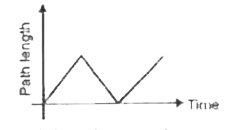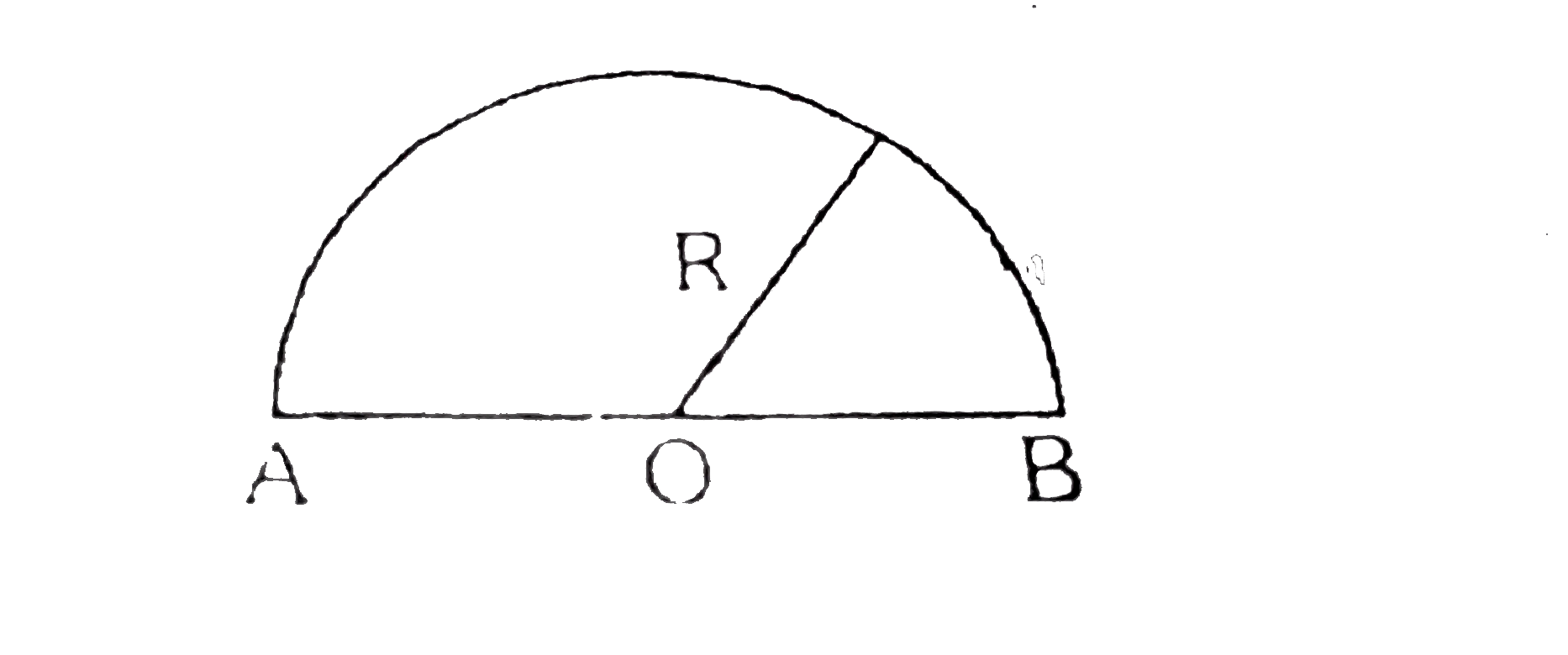A : for a moving particle distance can never be negative or zero.
R : Distance is a scalar quantity and never decreases with time for moving object.
If both Assertion & Reason are true and the reason is the correct explanation of the assertion, then mark (1).
If both Assertion & Reason are true but the reason is not the correct explanation of the assertion, then mark (2).
If Assertion is true statement but Reason is false, then mark (3).
If both Assertion and Reason are false statement, then mark (4).
The correct Answer is:1
To solve the question, we need to analyze both the assertion (A) and the reason (R) provided in the question.
1. Understanding the Assertion (A):
- The assertion states that "for a moving particle, distance can never be negative or zero."
- This is true because distance, by definition, measures how much ground an object has covered during its motion. It cannot be negative or zero as long as the particle is in motion.
2. Understanding the Reason (R):
- The reason states that "distance is a scalar quantity and never decreases with time for a moving object."
- This is also true. Distance is indeed a scalar quantity, meaning it has only magnitude and no direction. As a result, when an object moves, the distance it covers can only increase or remain constant, but it cannot decrease.
3. Evaluating the Relationship between A and R:
- The reason explains why the assertion is true. Since distance is a scalar quantity, it cannot take negative values or be zero when the object is in motion. The assertion is supported by the reason provided.
4. Conclusion:
- Since both the assertion and the reason are true, and the reason is a correct explanation for the assertion, the correct option is Option 1.
Final Answer:
Option 1: If both assertion and reason are true and reason is the correct explanation.
---
- The assertion states that "for a moving particle, distance can never be negative or zero."
- This is true because distance, by definition, measures how much ground an object has covered during its motion. It cannot be negative or zero as long as the particle is in motion.
- The reason states that "distance is a scalar quantity and never decreases with time for a moving object."
- This is also true. Distance is indeed a scalar quantity, meaning it has only magnitude and no direction. As a result, when an object moves, the distance it covers can only increase or remain constant, but it cannot decrease.
- The reason explains why the assertion is true. Since distance is a scalar quantity, it cannot take negative values or be zero when the object is in motion. The assertion is supported by the reason provided.
- Since both the assertion and the reason are true, and the reason is a correct explanation for the assertion, the correct option is Option 1.
Option 1: If both assertion and reason are true and reason is the correct explanation.
Topper's Solved these Questions
- MOTION IN A STRAIGHT LINEBOOK - AAKASH INSTITUTE ENGLISHCHAPTER - MOTION IN A STRAIGHT LINEEXERCISE - ASSIGNMENT (SECTION - C)
36 Videos
- MOTION IN A PLANEBOOK - AAKASH INSTITUTE ENGLISHCHAPTER - MOTION IN A PLANEEXERCISE - Assignement section -J (Aakash Challengers Questions)
7 Videos
- MOTION IN STRAIGHT LINEBOOK - AAKASH INSTITUTE ENGLISHCHAPTER - MOTION IN STRAIGHT LINEEXERCISE - Assignment (SECTION - J)
2 Videos
Similar Questions
Which of the following quantities can never be negative?
View SolutionDipole moment is a scalar quantity and is given by m=q×r.
View SolutionAssertion: Distance is a scalar quantity.
Reason: Distance is the length of path traversed.
View SolutionIf distance coverd by a particle is zero , what can be its displacement ?
View SolutionAssertion: Distance is a actual length of the path but displacement is a shortest distance between initial and final position.
Reason: Distance is a scalar quantity and it is always positive but displacement is a vector quantity. It may be positive, negative or zero.
View SolutionForce can move an object at rest.
View SolutionA : The following graph can't exist actually

R :Total path length never decreases with time.
View SolutionAssertion: A frame moving in a circle with constant speed can never be an inertial frame.
Reason: It has a constant acceleration.
View SolutionDistance is a scalar quantity. Displacement is a vector quqntity. The magnitude of displacement is always less than or equal to distance. For a moving body displacement can be zero but distance cannot be zero. Same concept is applicable regarding velocity and speed. Acceleration is the rate of change of velocity. If acceleration is constant, then equations of kinematics are applicable for one dimensional motion under the gravity in which air resistance is considered, then the value of acceleration depends on the density of medium. Each motion is measured with respect of frame of reference. Relative velocity may be greater/ smaller to the individual velocities.
A particle moves from A to B. Then the ratio of distance to displacement is :-

View SolutionDistance is a scalar quantity. Displacement is a vector quqntity. The magnitude of displacement is always less than or equal to distance. For a moving body displacement can be zero but distance cannot be zero. Same concept is applicable regarding velocity and speed. Acceleration is the rate of change of velocity. If acceleration is constant, then equations of kinematics are applicable for one dimensional motion under the gravity in which air resistance is considered, then the value of acceleration depends on the density of medium. Each motion is measured with respect of frame of reference. Relative velocity may be greater/ smaller to the individual velocities.
A particle is moving along the path y=4x2. The distance and displacement from x=1 to x=2 is (nearly) :-
View Solution
